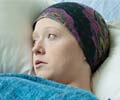A woman's chronic pain may be more complex and much difficult to treat as compared to chronic pain in men, experts claim

Although his work is on laboratory rodents at this stage, he said that these studies certainly show that women's experience of pain is more severe, News.com.au reported.
Dr Hutchinson, who will present his finding at a Faculty of Pain Medicine (FPM) meeting in Sydney, said that there are fundamental differences in the experience.
The focus of his work is to understand why acute pain turns to longer-term pain in some people and why this is more prevalent in women than in men.
His laboratory work has established for the first time that the brain's immune cells, known as glial cells, contribute to differences in pain between the sexes.
He said that understanding female chronic pain is profoundly important to treatment methods.
Source-ANI
 MEDINDIA
MEDINDIA



 Email
Email







